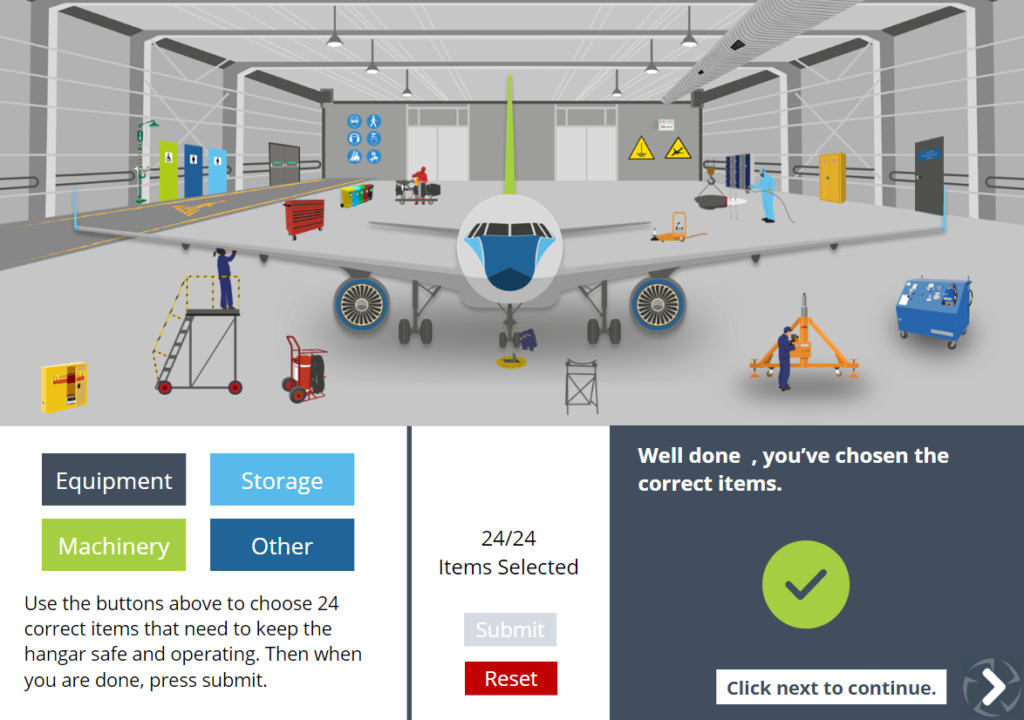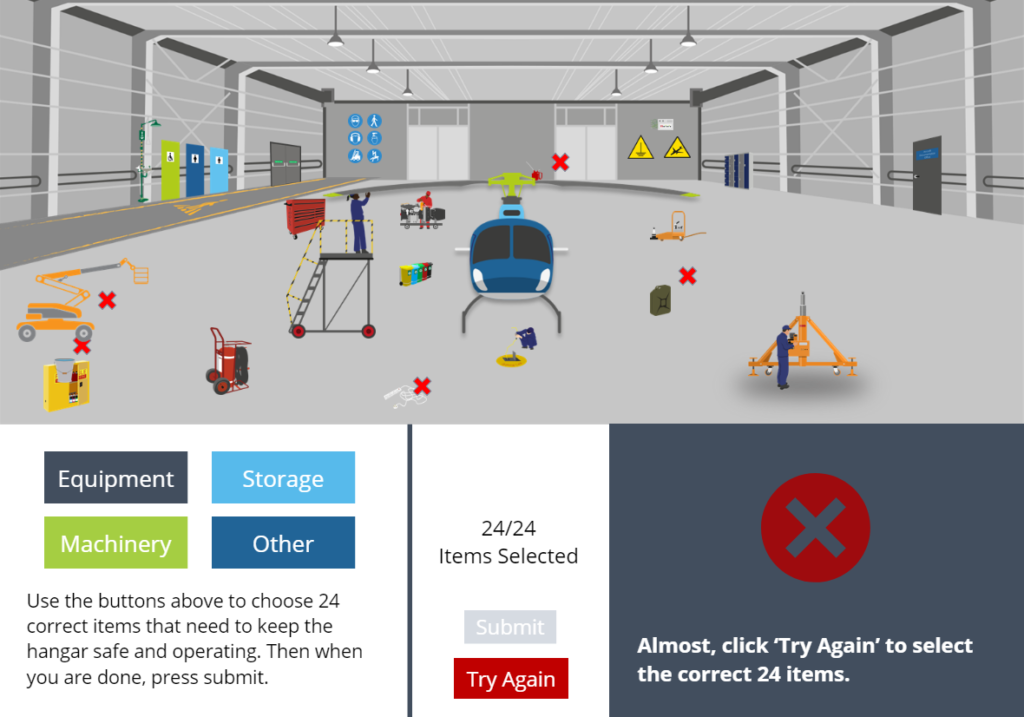Gamification: A set of activities and processes to solve problems by using or applying the characteristics of game elements while working to the learning objectives. It’s not Super Mario or Tetris.
Gamification within online learning is all about motivation, there are two types:
Extrinsic motivators come from the outside: punishment, tangible reward, peer pressure and so on. The carrot is more effective than the stick – potential reward motivates more strongly than potential punishment.
Intrinsic motivators come from within: development of skills or confidence, or autonomy for instance.
Online learning can be great at tapping into intrinsic motivators where people are driving the direction of their own learning. Done well, gamification can build on the foundations of intrinsic motivation by adding social connection and opens up opportunities for extrinsic motivators such as leader boards and badges. A great gamification strategy can do wonders for user engagement.
Using gamification in online learning can do wonders for user engagement. The best games let participants make choices that influence outcomes. Putting the learner in control of the journey by using branching scenarios for example, can be a powerful way to build engagement. The most engaging games quickly show the consequences of your actions. Make a move and you soon know if it was a good one or if you need to take a different approach next time. The ways that a feedback cycle can be implemented are limited only by your imagination.
Gamification can be applied for most learning needs. Gamification can be used to fulfil most learning needs including induction, product sales, customer support, soft skills and compliance.
Additionally, it provides an effective, informal learning environment, and helps learners practice real life situations and challenges in a safe environment. This leads to a more engaged learning experience that facilitates a better knowledge retention.
People love games but remember that gamification isn’t just making something fun. Instead it’s about incentivising people to engage and actively participate in your learning to drive a behaviour change.
At Resource Group we created our very own gamified activity within an eLearning course for our apprentices. Business Improvement Techniques (BIT) was created for City & Guilds Unit 294: Personal Accountability in an Aircraft Maintenance Environment. The course is built in a modern and intuitive format allowing the user to learn at their own pace. Due to the topic and heavy compliance of the course we decided to gamify the self-assessment at the end. The reason for this is to give the user the best chance to see the hangar and its items within without being physically in one. The activity is set in two scenarios of aircraft ‘Fixed Wing’ or ‘Rotor Blade’ with over 24 items that could be housed within the hangar however the learner has to choose 24 correct ones keep the hangar safe and operational. Once they have passed this activity an on-screen bespoke certificate is generated to confirm which aircraft activity they completed.


